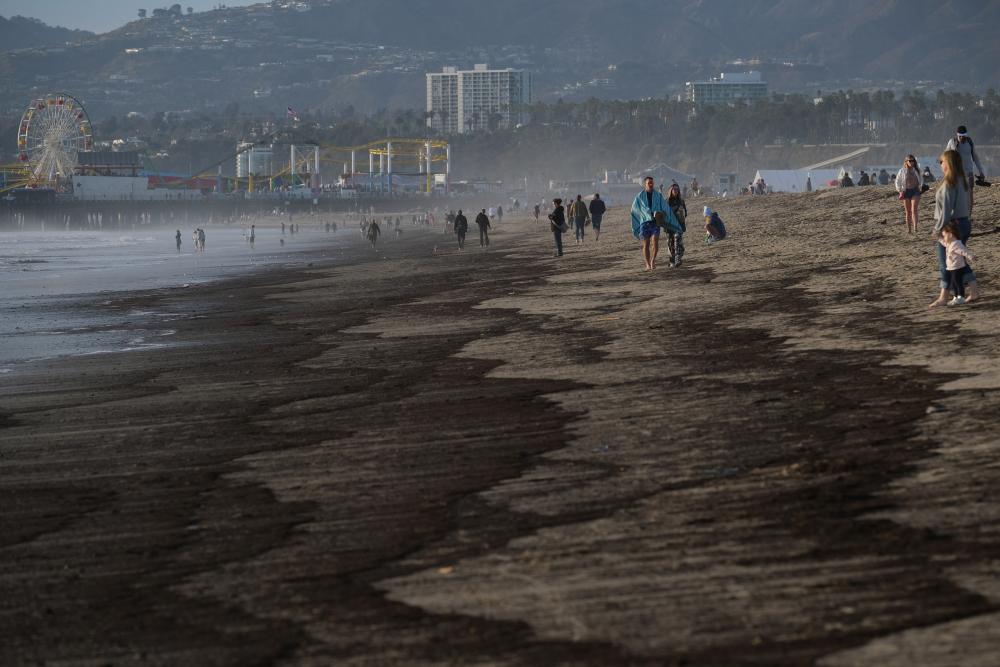
Los Angeles county beaches are contending with the aftermath of recent wildfires and winter storms as debris from the Palisades fire and urban runoff are carried to the shoreline.
After last week’s major rainstorm, beaches in southern California have been littered with timber, twisted metals, construction materials and charred silt and sediment originating from the Palisades fire in January. That blaze, along with the Eaton fire, killed at least 29 people.
The Los Angeles county department of beaches and harbors said last week that officials were monitoring beach conditions and ocean water quality. Maintenance crews were working to remove large pieces of debris from the shore, and the department advised beachgoers to avoid visible fire debris and stay out of the ocean water where advisories were posted.
Advertisement
Advertisement
The department of public health lifted the ocean water quality rain advisory last week for all Los Angeles county beaches except those affected by fire. Beaches from Las Flores beach to Santa Monica state beach were still under advisory warnings.
Just days after the fires began, winds carried ash and charred debris up to 100 miles (161km) offshore. Since then, wind and waves have spread the charred material along the county’s coastline.
“The fires burn also through vegetations that normally will help stabilize soil,” said Tania Pineda-Enriquez, water-quality data and policy specialist at Heal the Bay, an environmental advocacy group. “Without this natural barrier, all the ash and soil will be washed out into the waterways.”
Beachgoers can still hang around the sand areas but should avoid water contact, especially near storm drains, creeks and rivers, since ocean water-quality testing results are still pending, according to the department of public health.
Advertisement
Advertisement
Initial sediment testing at Will Rogers state beach and Topanga Beach shows that the charred silt and sediment are not hazardous to people or the environment, the department of beaches and harbors said.
More testing is being conducted this week. The dark sediment, made up of fine ash mixed with sand, will not be removed to prevent further shoreline erosion and habitat destruction.
“Natural tides and weather will gradually break down and wash away the sediment, allowing the ecosystem to recover naturally,” reads a statement from the department of beaches and harbors.
The concern about debris comes as Angelenos protest against the Environmental Protection Agency’s decision to set up a hazardous waste sorting site in lower Topanga near the ocean. The site is meant to process materials like paint, solvents and lithium-ion batteries from wildfire-ravaged homes, but hundreds of protesters thus far have raised concerns over the risks to water quality, wildlife and Indigenous heritage.
EMEA Tribune is not involved in this news article, it is taken from our partners and or from the News Agencies. Copyright and Credit go to the News Agencies, email news@emeatribune.com Follow our WhatsApp verified Channel



